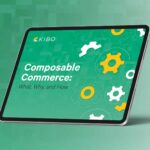B2B customers want an unbeatable experience from their vendors and expect quick, effortless buying, seamless shopping options, and self-driven convenience. According to McKinsey, they also prefer hybrid selling, which combines in-person, remote, and self-service interactions across the purchasing journey.
As B2B buyers become increasingly more efficient at using technology to drive their buying journey, they’re putting pressure on B2B sellers to adapt sales models and technology capabilities or risk losing market share.
This is largely because of the shift in demographics among B2B buyers — 64% of B2B buyers are Millennials and Gen Z’ers. According to Gartner, 44% of Millennials prefer no sales rep interaction during the purchase process.
In this post, we explore the most recent—and pressing—B2B eCommerce trends from sources like McKinsey, Gartner, and Forrester, and examine how they can help you plan your eCommerce strategy for 2024 and beyond.
Trend #1: Self-service buying
Preference for self-service buying continues to climb in B2B. As a result, the sales rep role is changing. Self-service buying from B2B buyers and buying groups is on the rise, with self-directed interactions outpacing human interactions by 15 versus 12, respectively.
This is according to recent data by McKinsey and supported by Forrester, who also notes that two-thirds of B2B buyers are willing to spend over $50,000 without ever speaking to a salesperson and a third are willing to spend over $500,000.
Here are some ways that B2B sales reps are navigating their changing roles and responsibilities within a self-service buying environment:
- Embrace an omnichannel and hybrid sales model by combining remote and in-person interactions and aligning, upgrading, and unifying digital and eCommerce channels to meet customer preferences and needs.
- Use data to better analyze and improve the B2B sales process, optimize sales performance, and streamline the selling approach with data-backed insights.
- Offer seller-free buying choices like bulk and quick ordering, subscription models, and automated replenishment that caters to a demand for convenience and speed.
- Provide value-added services like consulting, training, support, and customization which help differentiate your product or service from competitors and increase customer loyalty.
- Align with marketing teams to create relevant and engaging content for buyers and showcase solutions tailored for specific use cases, and more qualified, lower funnel leads.
- Practice deep sales which focuses on building trust, empathy, and value with customers through meaningful conversations and tailored solutions.
Trend #2: Generative AI (GenAI) will start to play a role in B2B
Everyone is talking about GenAI these days, but very few businesses are reaping the benefits. According to Forrester, only about a quarter of businesses will see ROI from GenAI tech in 2024. However, when implemented correctly, there are several benefits of incorporating GenAI, including:
- Creating content tailored to the brand’s voice for product pages or personalized to the buyer’s preferences.
- Prioritizing leads for the sales team to cut down on time identifying qualified leads — leading to higher win rates.
- Streamline procurement processes, automating tasks like order processing and vendor communication, reducing errors, and freeing up time for strategic decision-making.
- Provide invaluable market insights and feed product development by analyzing real-time data, offering businesses actionable information on market trends, competitors, and pricing dynamics.
- Improve customer support and sales interactions with advanced chatbots and virtual assistants — ensuring businesses can effectively meet customer needs.
Trend #3: Payment flexibility and options
With more flexibility in how they shop, B2B buyers are also looking for flexibility in how they pay for their purchases. B2B transactions can vary greatly in terms of size, frequency, and complexity. And each B2B business has their own financial needs, so offering multiple payment options allows buyers to choose methods that align with their cash flow, budgeting, and financial preferences.
Offering various payment methods makes the purchasing process more convenient for B2B buyers. They can select the option that is easiest for them, reducing friction in the transaction and potentially speeding up the buying process. We expect to see more B2B companies exploring commerce solutions that support various payment options such as invoicing, purchase orders, credit lines, and online payments to accommodate different B2B transactions.
Trend #4: B2C experiences for B2B buyers
Digital selling models, even for services and solutions that once relied on sales reps to do the lion’s share of selling, are increasingly becoming the norm. In 2021, Gartner reported that 50% of Chief Sales Officers planned to shift focus “from being leaders of sellers to being leaders of selling” by 2025. The onus is on sellers to deliver B2C-like eCommerce experiences.
But what defines a good eCommerce experience? Things like clear pricing information, real-time and accurate inventory availability, transparency around sales claims, and content that’s tailored to specific buying stages, groups, and people are all tied to better digital experiences. Many of today’s B2B buyers have been trained in the art of customer-first retail via Amazon, whose Prime program emphasizes quick order fulfillment, easy returns, and perks like Amazon’s Daily Deals.
All of this requires an eCommerce platform with capabilities that facilitate features like product filtering, robust search, multiple fulfillment options, and order management that allows for expansion and integration with different shopping channels.
Trend #5: A mobile-first approach
B2B buyers use about 10 sales channels when researching a product or service. While this number hasn’t changed much in the past seven years, the channels themselves are becoming more mobile focused.
Respondents in a 2022 McKinsey survey reported using social media posts, mobile apps, and text messages during the buying journey, particularly during at the start of their research. Use of these channels quadrupled in 2022 versus 2019, per the following chart:
Source: McKinsey
Introducing new digital channels was a winning strategy for the McKinsey respondents, with 38% of the largest share winners saying they introduced new channels and 37% saying that experimentation with new channels helped them develop a more effective digital strategy.
Trend #6: Automation
Streamlining operations across the B2B selling landscape is a priority for organizations that, increasingly, must do more with less. Automation allows sales and customer service teams to spend less time on repetitive tasks, reduces errors, and empowers agents to engage with customers and focus on selling.
Automation can improve all aspects of your B2B eCommerce capabilities, including:
- Real-time inventory visibility – tracks and updates inventory levels in real-time via APIs, generates low-stock alerts, reduces/eliminates need for manual data entry.
- Fulfillment/order processing – provides real-time order updates, generates packing slips, automates customer processing of orders (verifying, picking, packing, shipping), and prevents cancelled orders from being fulfilled.
- Customer service – provides order status updates and delivery confirmation via SMS/email alerts, routes customers seeking support to the appropriate agent (or guide them to the right answer within your knowledge base).
- Order orchestration – uses order routing logic to send orders to the most appropriate fulfillment location, provides automated quotes to customers (including discounts or special pricing), auto-updates customer profiles with order history and personal preferences.
Trend #7: Omnichannel experiences
As noted above, B2B buyers are using up to 10 channels in their purchases, navigating a multi-channel, multi-touchpoint buying journey largely on their own. Omnichannel experiences are a B2B trend because they enable sellers to meet buyers where they are and excel in all channels (including self-service, in-person, social media, branches, etc.)
Remote interactions became the norm during the pandemic, forcing buyers and sellers to connect digitally using various tools and channels like video conferencing, chatbots, and social media. Now, buyers are accustomed to using digital tools as part of their buying process and that’s not going away. According to a recent McKinsey survey, 35% of B2B buyers rated eCommerce as the most effective sales channel, followed by in-person sales (26%), video conference (12%), email (10%), and telephone (8%).
Investing in the technology and processes that facilitate seamless omnichannel B2B eCommerce experiences is the only way to meet the expectations of buyers who understand—and look for—the kind of omnichannel service they get from their B2C experiences. That requires a unified view of each customer (e.g., customer centricity), a holistic approach to sales and marketing (e.g., eliminate silos), omnichannel fulfillment capabilities, and a firm grasp on data.
In short, to deliver a successful omnichannel experience for your customers, you must streamline operations between all your digital touchpoints—including things like payment systems, eCommerce platforms, and customer service tools—to create a single view of each customer that’s easily accessible by everyone in your organization.
Trend #8: B2B marketplaces
B2B sellers use third-party eCommerce marketplaces to expand their reach, assess the competition, and add convenience to buyers who use marketplaces like Amazon Business and Alibaba.com for their buying needs.
Marketplaces are a popular destination for B2B buyers, with data from a recent McKinsey survey of 3700 B2B executives revealing they’re a top channel used for B2B purchases. Nearly half of companies in the McKinsey survey said they’re succeeding at B2B ecommerce thanks to marketplaces.
B2B marketplaces give buyers access to tools like product reviews, customer ratings, and comparison shopping. Over 80% of B2B buyers prefer ordering or paying through digital commerce channels.
A B2B marketplace strategy can augment traditional rep-driven selling approaches by enabling customers to complete an order online using a commerce platform they trust. Amazon (for example), which was the most preferred business marketplace for buyers and sellers in 2021, enables businesses to sell both goods and services.
B2B sellers are tailoring their selling strategies for marketplaces by:
- Integrating marketplace accounts with existing commerce operations (inventory, order fulfillment, customer service).
- Leveraging third-party marketplace analytics and marketing capabilities to inform selling strategies.
- Appearing on more than one marketplace to benefit from a wider audience reach.
- Delivering added value to customers by bundling products and services in the marketplace offerings, increasing access to new geographic regions, and tailoring offerings to new customer segments.
Trend #9: Recurring orders
In B2B eCommerce, recurring orders, repurchases, and subscription renewals signal high customer satisfaction and can be a significant source of reliable revenue for sellers. Recurring orders can apply to products repurchased from suppliers (e.g., office supplies), inventory, and services.
Your repurchase rate is the percent of existing customers that return to your website to reorder/renew a product or service. Improving recurring orders is a trending selling strategy that’s been gaining traction as buyers look for ways to automate stock replenishment, renewals, and reordering from trusted vendors.
The repurchase rate formula looks like this:
Repurchase Rate (RPR) = # of customers who bought from you more than once in a given time period / Total # of customers for that same time period
For B2B sellers, recurring orders and subscriptions can provide a steady stream of revenue. They increase the customer lifetime value (CLV) and help build loyalty. Supporting recurring orders requires an order management system that allows you to process repeat orders, implement pricing and discounts for returning customers, and activate subscription-based pricing.
Trend #10: Investing in composable commerce technology
B2B companies are historically known as being slow adopters, but taking the slow approach is no longer an option. Businesses are investing more in flexible, scalable commerce solutions that allow them to seamlessly integrate systems and optimize the customer experience without ‘ripping and replacing’ entire systems.
- Composability – Composable commerce systems offer adaptability, scalability, and seamless integration for B2B businesses. They allow for quick adjustments to market changes, efficient integration of various systems, cost-effective customization, and the flexibility to choose technologies without vendor lock-in.
- Integrations – Depending on your company’s digital maturity, you may need a pre-packaged frontend that comes with pre-built integrations, pricing, and implementation accelerators for headless implementations and use cases with commerce partners. Additionally, the ability to seamlessly integrate with existing systems, such as an ERP, PIM, and others ensures there are no disruptions to business operations or customer experience.
- Multi-channel – Technology that can support multiple channels is important for B2B companies who want to leverage touchpoints/strategies like mobile apps or social selling, enter new markets, and avoid having to buy an additional platform for each channel. Since it’s difficult to predict what channels and behaviors customers will want, the ability to add and adjust capabilities quickly is key.
Read our B2B eCommerce Capabilities Checklist for a full list of functions that making B2B online selling easier.
The future of B2B eCommerce
Forrester estimates that US B2B eCommerce sales will reach $3 trillion by 2027 — growing from 17% of all US B2B sales in 2022 to 24% by 2027.
Emerging trends including rapid order fulfillment, seamless omnichannel experiences, and GenAI are fueling investment in technologies like headless commerce and omnichannel order management.
These innovations help drive growth and increase agility by enabling B2B sellers to make changes to their storefronts and commerce channels quickly. While there’s no guarantee that any one trend, behavior or technology will endure the whims of customer buying needs and behaviors, the best way to future-proof your business is to create an agile eCommerce infrastructure that makes it possible to adapt quickly, with minimal disruption.
Ultimately, the success of your B2B eCommerce approach depends on how equipped you are to meet the needs of buyers and buying groups. By anticipating customer behaviors and investing in the right technology, you’ll be well-positioned to leverage the trends that will shape 2024 and beyond.
If you’d like to see Kibo B2B eCommerce platform in action, register for a quick 15-minute demo.

Checklist: Key Features of a B2B eCommerce Platform That Simplify the Complexities of Selling Online

eCommerce Replatforming: Step-by-Step Guide for B2B & B2C Companies

Composable Commerce: What, Why, and How

